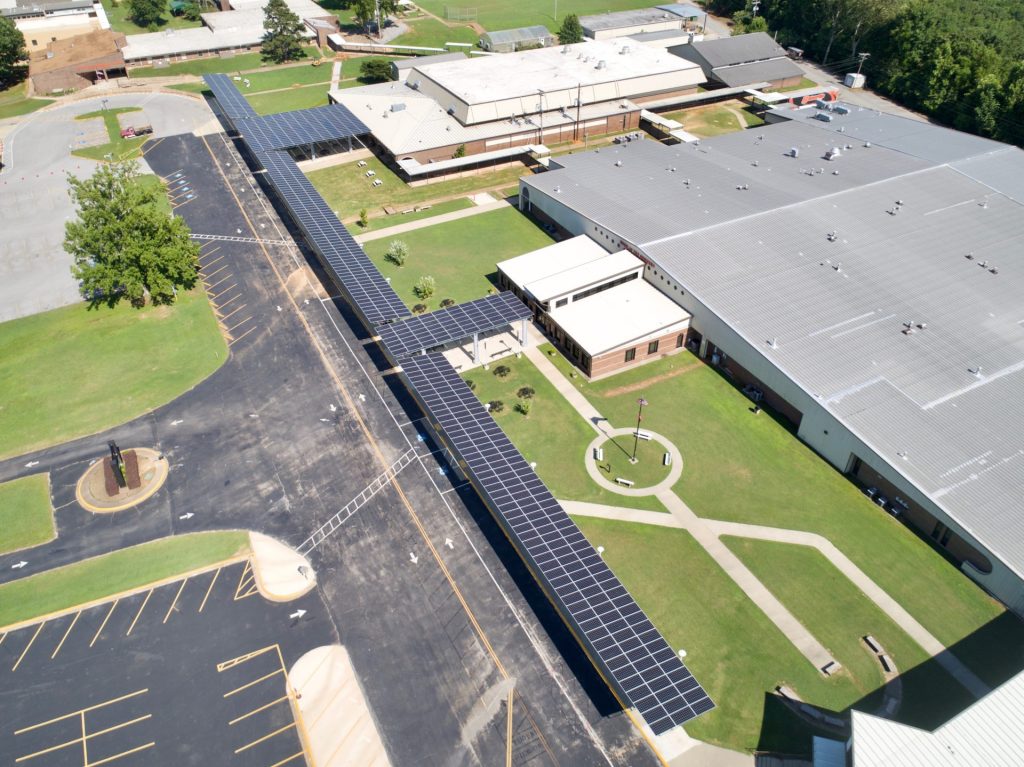The School With Solar Powered Salaries
Batesville, Arkansas is a small city in the northeastern part of the state. (Here’s a map.) It’s home to about 11,000 people and has seen steady population growth since the 1960s, at about 10% decade over decade. With that growth has come children, and with those children have come a demand for education. And as any U.S. educator will tell you, there often isn’t a lot of money for education.
But Batesville found a way — by going green.
In 2017, Dr. Michael Hester took the helm as the superintendent of the Batesville School District and immediately, he turned his focus on the school system’s budget. As the Harvard Graduate School of Education noted in an interview with Dr. Hester, “he needed to save money in the budget and wanted to retain teachers” — two goals that typically are at odds with one another. Teacher salaries, particularly ones with a long tenure, make up a lot of any school’s budget, after all. So Hester looked elsewhere — toward the environment.
That year, Hester retained a company called Entegrity to audit the school’s energy usage, and the district wasn’t doing a great job keeping costs low. According to Energy News Network, Entegrity “found that the district’s annual utility bills surpassed $600,000, a steep sum for a school system that for years was strapped for cash.” And a lot of that could be mitigated by some very simple changes — the school system decided to “upgrade lighting to LEDs, install water-saving fixtures, [and] insulate buildings,” according to the Philadelphia Citizen — and also, install solar panels, funded through a forgivable loan paid out by a percentage of cost savings over a 20-year-period. So they installed a lot of solar panels, some of which you can see below.
That’s Batesville High, and as you can see, the walkways into the school are covered in a canopy of solar panels. And that’s not all. The school also installed an array of solar panels on some open land. In total, the district now has roughly 1,400 solar panels, or two for every five students. With all of these changes, according to the school’s website, the school district cut their energy costs nearly in half — and that was only the beginning. The school board claimed that, by 2022, the solar panels were able to collect more energy than the schools needed, and the school ended up selling that excess energy to the power company. According to Energy News Network, “in three years [the solar panels] generated enough savings to transform the district’s $250,000 budget deficit into a $1.8 million surplus.”
For the teachers, that became a big victory. As Hester explained in his Harvard interview, when installing the solar panels, the school district agreed to “commit to the teachers that the money we save, we would give to their salaries.” The school delivered on that promise and then some. As Kathy West, a board member of the Batesville School District told the U.S. Department of Energy, “before solar, our base [salary for first-year teachers] was $30,000” but, with the new income stream and cost savings, the district “raised the base to $40,500 for the next year.”
Other schools are investigating using the Batesville model as well, in hopes of not just addressing the environment of tomorrow, but also the education of today.
Bonus fact: Typically, the fossil fuel industry is seen (perhaps unfairly) as a skeptic of green energy — but you probably wouldn’t get that feeling if you visited the Kentucky Coal Museum. Located in the small town of Benham just off the Virginia border (here’s a map), the museum, like most other non-profits, has looked for ways to save on expenses. In 2017, they decided that solar power was a good way to do that. That year, as WYMT Kentucky reported, the museum installed solar panels, cutting “at least eight to ten thousand dollars off the energy costs” required to operate the museum.
From the Archives: The Desert’s No Fly Zone: A solar thermal power plant with an, uh, interesting side effect.

